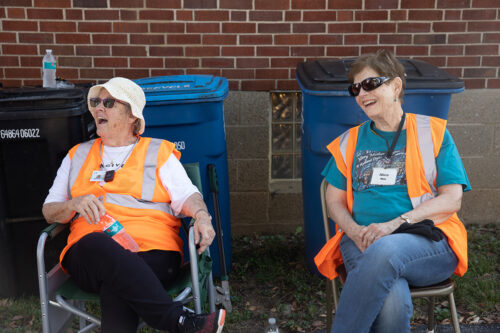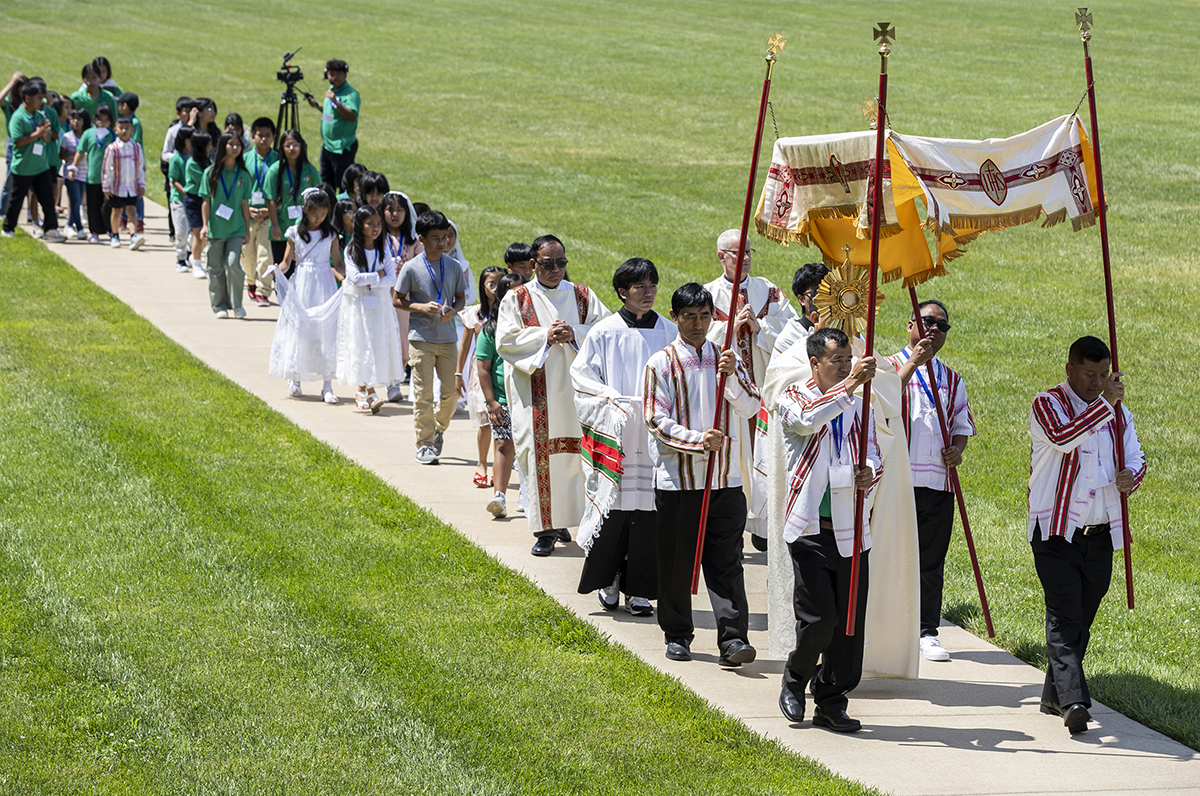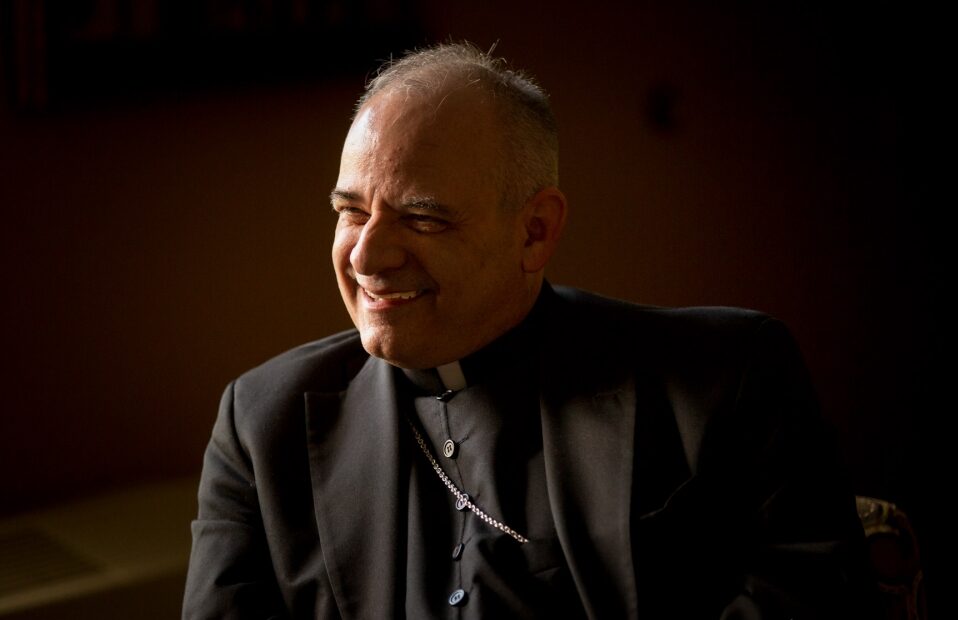New Laudato Si’ Commission to tackle creation care through education, support of parishes

Laudato Si’ Commission hosts summit, provides assistance in making environmentally sound changes
What began as a conversation about the environment turned into a concerted effort by members of Sacred Heart Parish in Valley Park to step up their efforts to care for God’s creation.
After attending a Just Faith course on Catholic social teaching and the environment, and Pope Francis’ encyclical “Laudato Si’,” Karen Dubrucq and several others formed Sacred Heart’s Green Team in 2018. Through small acts, the team has dedicated itself to improving sustainability practices at the parish and engaging in prayer and education on environmental issues.
Pope Francis “makes the point that it’s not about all of us as humans — we have to take care of our earth,” she said. “So how can we take care of the earth for the betterment of all of us? I want my grandkids to have better experiences of God’s creation.”
The team looked at ways to reduce waste at the parish’s annual Lenten fish fries. Through a collaboration with the Knights of Columbus, they replaced Styrofoam plates with reusable and compostable plates. Instead of plastic utensils, members purchased used silverware from several St. Vincent de Paul thrift stores.

Sherry Heumann, a parishioner at Mary Mother of the Church, tended to yard work during a service day organized by Mary Mother of the Church’s Care for Creation team on Sept. 21 at a home in Lemay. Mary Mother of the Church is among several parishes in the archdiocese that are finding ways to care for the earth within their parishes and in the community.
The Green Team has hosted electronic recycling events (this year’s event collected 10,000 pounds of computers, laptops, keyboards, microwaves, monitors, printers and more); partnered with Metropolitan Congregations United to acquire an air quality monitor to keep track of air conditions in the Valley Park area; increased recycling containers on the parish grounds; increased recycling efforts at school lunches; and added refillable water bottle dispensers on campus.
Sacred Heart is among several parishes in the archdiocese that are finding ways to care for the earth, one small step at a time. In September, Archbishop Mitchell T. Rozanski announced the formation of the Laudato Si Commission, which seeks to better align the Archdiocese of St. Louis with Catholic social teaching on integral ecology — that is, the complex connections between people and the environment — a key concept in Laudato Si’.
James Fowlkes-Comninellis, director of the Office of Ecumenical &Interreligious Affairs and who is overseeing the commission, said he hopes that the work will elevate the archdiocese’s activities under the framework of the Laudato Si’ Action Platform, which the Vatican launched as a hub for Catholic groups to participate in the process toward sustainability in the spirit of Pope Francis’ encyclical.
One of the major goals is to “get our Catholic house in order and move this into a space where we can also interact with other communities of faith as a way to share the riches of our Catholic tradition when it comes to taking care of the earth and to open up means of dialogue that would not otherwise be available,” Fowlkes-Comninellis said.
Dubrucq of Sacred Heart is among 20 people named to the commission, which will promote ecological awareness throughout the archdiocese via educational efforts. In addition to parish representatives, other commission members include several Catholic high school teachers and religious communities involved in environmental work.
The commission also held its inaugural Creation Care Summit Sept. 21 at St. Louis University High School, which is expected to become an annual gathering that provides resources, inspiration and opportunities for parishes and other groups to advance their commitment to the environment.
Keynote speaker Benjamin de Foy, a professor at Saint Louis University’s Department of Earth and Atmospheric Sciences, said that cultural changes in caring for the earth follow the personal changes that we make in our daily lives.
“Something for climate action to keep in mind is looking for the positives, the win-wins, because the whole thing of Laudato Si’ is that it’s all connected,” he said. “So we’re not just doing one thing here, one thing there. We’re doing things that work across the whole of our lives. It’s personal actions, group commitments and culture change.”

Next year, the Laudato Si Commission plans to establish a micro-grant program for parishes to assist with specific projects dedicated to increasing energy efficiency, reducing landfill waste and assisting with low-waste fish fries.
“This is offering small sums to help parishes adopt more sustainable practices, whether that’s shifting to compostable plates for our Lenten fish fries,” Fowlkes-Comninellis said, “or let’s use reusable dishes for our parish events instead of disposable dishes, and we need help buying a sanitizer to clean them.”
Commission co-chair Jamie Hasemeier has been active in sustainability practices for about two decades. The archdiocesan commission was a yearslong process in the making and will provide Catholics a way to address the climate crisis in ways that connect spirituality with practical approaches, said the member of Holy Redeemer Parish in Webster Groves.
Hasemeier sees the potential for what Pope Francis describes as an “ecological conversation, to touch spirits, hearts and minds of everyone in our region,” she said. “We want Catholic parishes and groups to dial in and see where our teachings lead us to these actions of solutions. Our ecosystems are at a critical tipping point. Individual actions are so important, but it takes each person to ripple out, and I hope this is the beginning of what will become something good.”
“Good, better, best” approach
Jamie Hasemeier recommends a “good, better, best” approach in making small eco-friendly changes at home. She encourages progress over perfection, rather than trying to achieve everything at once. Some examples include:
>> Packing lunches

Good: brown paper bag

Better: eliminate individually wrapped snacks (chips, fruit snacks, etc.)

Best: zero-waste lunch (reusable containers, bag, bento box, bandanas for wrapping snacks or sandwiches)
>> Home

Good: Replace light bulbs to LED

Better: Use large appliances (dishwasher, washer, dryer) after peak demand (usually after 8 p.m.)

Best: Tap into the rebates offered by the federal government to replace a broken HVAC with a heat pump (both air-conditioning and heat)
>> Gardening

Good: plant an edible garden (veggies, melons, fruit trees and bushes)

Better: plant native species to support local fauna and sequester carbon

Best: convert standard grass to native prairie (even a small portion of the yard — and wait for the finches!)
>> Clothing

Good: buy as much second-hand clothing as possible

Better: reduce your online buying by 50%

Best: buy as much as you can locally
Commission hosts first summit in September, will sponsor parish micro grant program
Subscribe to Read All St. Louis Review Stories
All readers receive 5 stories to read free per month. After that, readers will need to be logged in.
If you are currently receive the St. Louis Review at your home or office, please send your name and address (and subscriber id if you know it) to subscriptions@stlouisreview.com to get your login information.
If you are not currently a subscriber to the St. Louis Review, please contact subscriptions@stlouisreview.com for information on how to subscribe.






